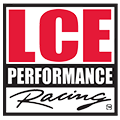Hastings Street Piston Ring Set
(95.00mm / Standard)
LC Engineering's street rings are custom packaged by Hastings to our requirements. Hastings piston rings are built with cast iron, chrome plated, barrel faced top compression rings. They have conventional cast iron second rings and 3-piece, standard-tension stainless steel oil rings. These ring sets are ideal for street use, race applications, and mild levels of nitrous or forced induction.
NOTE: No returns excepted on any items that are Standard Size. Please insure your engine will accept Standard Size before ordering.
Contact our Tech Support Line for further information at 928-575-2174.
|
Note: Images are for illustration purposes only. Images may not represent the product listed. Please contact customer service with any questions or concerns: 1-928-505-2501.
|
Engine – Checking Compression Ring Gaps (Street Pistons)
Ring gaps are often a confusing and misunderstood part of a re-ring job. There are MINIMUM and MAXIMUM ring gap specifications, which must be observed for the best performance of a new ring set.
Minimum gap tolerances:
Minimum gap tolerances must be observed in order to prevent the ring ends from butting together as the ring expands when the engine approaches operating temperature. Recommended is a MINIMUM of .0035 gap per inch of cylinder
diameter. Example: STD Bore 22R/RE is 92mm or 3.622” x .0035 = .0 13 minimum gap.
Maximum ring gap:
Maximum ring gap is an important part of ring performance in that too much gap results in lost compression, power loss, and ultimately poor oil control. The following chart indicates the specifications for compression ring gap as outlined by the Society of Automotive Engineers (SAE) as standards for the automotive piston ring manufacturers.
Safe, Recommended Automotive Compression Ring Gap Clearances:
An important fact to remember is that the manufacturers rigidly adhere to these tolerances and that the ring gaps are inspected in gauges accurate to .0001" at the cylinder diameter the ring is manufactured for. Any increase in the diameter of the cylinder is being used in, over the designated size, results in an increase of approximately .003" in ring gap for each .001" increase in cylinder diameter.
In order to check ring gap, the rings should be placed at the lowest possible part of the cylinder (below ring travel area) as this is the portion of the cylinder that is unworn and which the ring is sized for. Checking ring gap in the worn portion of the cylinder will show a gap increase in direct relation to the amount of cylinder wear present. The illustration below shows the effect of cylinder wear on ring gap.
This graphically illustrates the effect on ring gap that cylinder wear has. You will notice that the tapered cylinder has .012 wear at the top portion of ring travel, which increases the ring gap .036. Therefore, it is entirely possible for the ring to have .061 end gap in that portion of the cylinder and be within recommended manufacturing tolerance.
For this reason, It is recommended a MAXIMUM of .003" wear per inch of cylinder diameter, not to exceed .012" in any case for successful re-ringing. If a cylinder is worn in excess of this it should be re-bored and the proper oversize ring installed. Checking ring gaps can give an approximation of cylinder wear as well as keep you from installing wrong sized rings for the application being re-rung.
The Diagram below shows effect of .012 cylinder taper on ring gap in four-inch bore.












